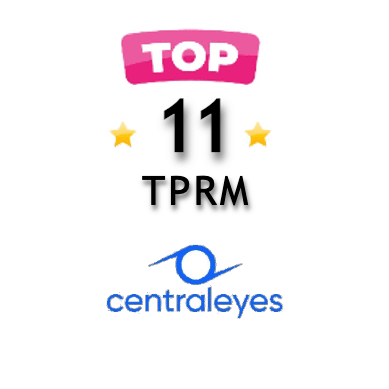Who Holds the Moral Compass of AI?
Jane is developing an AI algorithm for a financial service company. One option she’s considering promises to optimize trading strategies and increase profits, but it involves leveraging customer data in ways that could remotely compromise privacy. The alternative algorithm prioritizes data protection but may not deliver the same level of performance and profitability.
Who should advise Jane in this dilemma?
Mark is a product manager at a tech startup facing a similar issue regarding the platform’s recommendation algorithm. He can choose to optimize user engagement by recommending content that aligns with users’ preferences. Mark predicts that this will increase platform usage and revenue. However, this approach raises concerns about algorithmic bias, misinformation, or harmful content propagation. On the other hand, an alternative algorithm could prioritize filtering out misinformation and promoting diverse perspectives to enhance user safety and well-being. This approach may lead to lower user engagement and impact the platform’s growth and profitability.
What rulebook guides this kind of decision?
Maria is a data scientist working for a healthcare technology company. Maria is tasked with developing an AI algorithm to predict patient outcomes based on medical data. One approach involves training the algorithm on a large dataset of patient records, including sensitive information such as medical history, diagnoses, and treatments. This approach has the potential to significantly improve patient care by identifying high-risk individuals and optimizing treatment plans.
Is conscience the determining factor of Maria’s decision?

What is Governance in AI?
Artificial intelligence (AI) governance refers to the rules that ensure AI tools and systems are safe and ethical. It defines the principles, norms, and standards driving AI research, development, and application while safeguarding safety, fairness, and human rights.
AI governance addresses the inherent flaws produced by the human factor in AI creation and maintenance. AI is susceptible to human biases and flaws since it is built from human-created, extremely sophisticated code and machine learning. Governance provides a structured framework for mitigating these risks by monitoring, analyzing, and updating machine learning algorithms to prevent inaccurate or damaging conclusions.
AI solutions must be designed and applied correctly and ethically. This includes addressing AI-related risks such as bias, discrimination, and individual damage. Governance mitigates these risks.
Why is AI Data Governance Important?
AI data governance ensures compliance, trust, and efficiency while creating and deploying AI systems. The risk of undesirable repercussions grows as AI becomes more integrated into corporate and governmental activities.
High-profile errors, such as the Tay chatbot incident, in which a Microsoft AI chatbot learned toxic behavior from public social media interactions, and the COMPAS software’s biased sentencing decisions, have highlighted the importance of good governance in preventing harm and maintaining public trust.
These examples show how AI can cause significant societal and ethical harm without effective monitoring, emphasizing the importance of governance in managing the risks associated with powerful AI. AI governance aims to balance scientific advancement and safety, ensuring that AI systems do not violate human dignity or rights.
Examples of AI Governance
The following examples show how AI governance works in various contexts:
Currently, various attempts are underway to design effective AI governance systems. One example is the AI Bill of Rights in the United States which asserts that AI systems must be accountable, transparent, and secure.
Other countries have also formed national strategies for responsible AI development and use. These include:
- Canada’s AI and Data Act
- China’s Generative AI Measurements
- EU AI Act
Over 40 nations have adopted the Organisation for Economic Cooperation and Development’s (OECD) AI Principles, which emphasize responsible stewardship of trustworthy AI systems, including openness, justice, and accountability.
Ongoing research and conversations are also taking place to address growing difficulties and identify viable solutions for managing AI systems.
Are the NIST AI RMF and ISO/IEC 42001 Governance Frameworks?
The NIST AI Risk Management Framework (AI RMF) and ISO/IEC 42001 are not considered governance frameworks in the classic sense. The NIST AI RMF principally guides managing the risks associated with AI models and algorithms, focusing on risk assessment, mitigation, and monitoring during AI implementation. Similarly, ISO/IEC 42001 AI governance certification aims to create an AI management system based on ethical principles, transparency, and confidence in AI systems.
It’s important to note that while they are not classified as AI Governance Frameworks, organizations can use these standards as a blueprint to self-regulate their AI operations and ensure ethical and safe usage. Early adopters of these standards will also be better equipped to align with AI governance regulations as they emerge.
Start Getting Value With
Centraleyes for Free
See for yourself how the Centraleyes platform exceeds anything an old GRC
system does and eliminates the need for manual processes and spreadsheets
to give you immediate value and run a full risk assessment in less than 30 days
Who is Responsible For AI governance?
In an enterprise-level firm, the CEO and senior leadership are ultimately accountable for ensuring that good AI governance is implemented throughout the AI lifecycle. Audit teams are critical for assessing the data integrity of AI systems and ensuring that they operate correctly and without errors or biases. The CFO is responsible for the financial aspects of AI programs, such as expense control and risk reduction.
The duty for AI governance does not fall exclusively on one person or department; it is a collaborative effort in which every leader must highlight accountability and guarantee that AI technologies are used properly and ethically throughout the organization. The CEO and senior executives establish the company’s overall tone and culture.
Prioritizing accountable AI governance communicates a clear message to all employees: utilize AI responsibly and ethically. The CEO and other top executives can invest in staff AI governance training, actively design internal policies and practices, and promote open communication and collaboration.
Principles for Responsible AI Governance
AI governance is critical for controlling rapid advances in AI technology, especially with the rise of generative AI. Generative AI, comprised of technology capable of producing new material and solutions such as text, graphics, and code, offers enormous promise across various applications. From improving creative processes in design and media to automating jobs in software development, generative AI is changing how industries work. However, with its widespread application comes the necessity for strong AI governance.
The principles of responsible AI governance are critical for enterprises to protect themselves and their clients. The concepts listed below can help firms develop and apply AI technologies ethically.
Empathy
Organizations must consider the societal consequences of AI, not simply the scientific and financial elements. They must consider and address the impact of AI on all stakeholders.
Bias control
Thoroughly scrutinizing training data is critical to avoid embedding real-world biases into AI systems and to assure fair and unbiased decision-making.
Transparency
AI algorithms must operate and make judgments clearly and openly, and enterprises must be willing to explain the logic and reasoning behind AI-driven outcomes.
Accountability
Organizations should proactively establish and adhere to high standards for managing the enormous changes that AI can bring while remaining accountable for AI’s implications.
Safety and Security
Requires developers of sophisticated AI systems to share safety test findings and vital data with the US government. Standardization, tools, and tests are necessary to ensure the safety and trustworthiness of AI systems.
Advantages of AI Governance.
A strong governance system can help companies demonstrate compliance and commitment to the responsible use of artificial intelligence.
AI Governance provides other benefits to organizations that use artificial intelligence. One of the obvious benefits of AI governance is removing “the black box” element from AI models. This helps stakeholders to understand how models work and make informed decisions about their use.
Data Governance and AI also enable data scientists to catalog their models, easily track which models are used for specific tasks, and monitor how each model performs. Using this knowledge, businesses can improve their ability to discover, understand, and trust the data used to train their models, resulting in more accurate and trustworthy results.
AI Governance Models: How Much “Human” in the Equation?
How much human monitoring is necessary for responsible AI development? Let’s discuss three models:
Human-in-the-loop
In this model, humans make decisions. Machines make recommendations or assist with decision-making, but a person can ultimately override their proposals.
This paradigm allows for human intervention, ensuring that ethical considerations are addressed before making decisions.
Human-on-the-loop
“Human-on-the-loop” refers to the operation and supervision of autonomous systems, particularly in the context of artificial intelligence (AI) and military applications.
It is a compromise between fully autonomous systems (“human-out-of-the-loop”) and those that require continuous human control or decision-making (“human-in-the-loop”). For example, a human can intervene and stop an AI action at a time.
Human-out-of-the-loop
In this concept, machines make decisions autonomously, with no human intervention.
This can be useful in cases where time is of the essence, or humans do not have all the information they need to make sound decisions. However, technology also introduces significant risks if something goes wrong without human intervention.
Best Practices for AI Use and Development
- Identify the problem(s) you want to address.
- Confirm that AI is the correct path towards a solution.
- Consider the threats and challenges.
- Do not wait for regulatory regimes, regulations, and rules to take effect.
- Begin with the existing compliance infrastructure like the NIST AI Risk Management Framework.
- Form an interdisciplinary AI Governance Team.
- Consider employing an AI Chief Risk Officer.
- Expand your present compliance program.
- Develop and implement an AI usage policy.
- Regular testing and human validation of data are critical.
- Hire or retool resources to support AI systems and their associated legal and compliance requirements.
- Provide AI training and education to employees and agents.
- Maintain documents, such as policies and procedures, and retain records.
- Consider purchasing insurance as a risk transfer tool.
Closing Thoughts
2024 will likely be a big, and perhaps watershed, year for AI regulation.
With the emergence of new AI technologies, there is growing recognition of the need for robust governance frameworks.
Staying informed and proactive is essential to address regulatory requirements and mitigate potential risks effectively. Don’t hesitate to contact us for tailored guidance and expert consultation on navigating the evolving landscape of AI governance.
Start Getting Value With
Centraleyes for Free
See for yourself how the Centraleyes platform exceeds anything an old GRC
system does and eliminates the need for manual processes and spreadsheets
to give you immediate value and run a full risk assessment in less than 30 days






